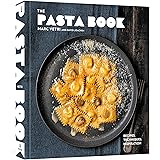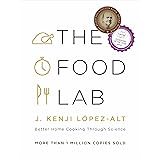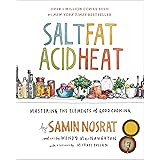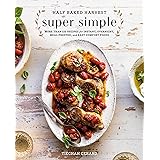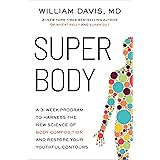The world of food is incredibly diverse, offering a vast array of choices that cater to different tastes, cultures, and ethical considerations. Often, distinguishing between what constitutes vegetarian and non-vegetarian food can be a source of confusion, especially for those new to understanding dietary classifications. While the video above provides an excellent basic introduction to five key examples for each category, there’s a much broader landscape of culinary options and dietary philosophies to explore.
This article aims to delve deeper into these definitions, expanding on the simple yet crucial distinctions you’ve just seen. We will explore more examples of both vegetarian and non-vegetarian items, discuss the nuances within these categories, and provide a richer context for understanding these fundamental food groups. Imagine if you could clearly identify every item on a restaurant menu as either plant-based or animal-derived; that clarity is precisely what we aim to help you achieve.
What Defines Vegetarian Food? Exploring Plant-Based Eating
As briefly highlighted in the video, vegetarian food primarily consists of ingredients derived from plants, with the exclusion of all animal flesh. This includes not just meat and fish, but also poultry and seafood. It’s a diet rich in fruits, vegetables, grains, legumes, nuts, and seeds, offering a wealth of nutrients and diverse flavors. Many people adopt a vegetarian lifestyle for various reasons, including ethical considerations regarding animal welfare, health benefits such as lower risks of heart disease, and environmental concerns related to animal agriculture.
Expanding on the video’s examples like paneer, tofu, soya chunks, lentils, curd, and milk, a broader understanding of plant-based eating encompasses a vast array of foods. Think about the vibrant colors of fresh bell peppers, the satisfying crunch of whole grain bread, or the hearty goodness of a bean stew. These are all quintessential components of a vegetarian diet, providing fiber, vitamins, and minerals. However, it’s important to note that the term ‘vegetarian’ itself can have several interpretations, leading to specific sub-categories of plant-focused diets.
Varieties of Vegetarian Diets and Plant-Based Proteins
While the basic definition of vegetarian food excludes animal flesh, different dietary patterns exist under this umbrella. For instance, a ‘lacto-ovo vegetarian’ consumes dairy products (like milk, curd, paneer) and eggs, in addition to plant foods. This is perhaps the most common form of vegetarianism worldwide, allowing for a diverse intake of nutrients. In contrast, a ‘lacto-vegetarian’ includes dairy but avoids eggs, while an ‘ovo-vegetarian’ consumes eggs but excludes dairy.
Beyond these, ‘vegans’ adhere to the strictest plant-based diet, avoiding all animal products whatsoever, including dairy, eggs, honey, and any animal-derived ingredients. This dietary choice often extends to lifestyle aspects, shunning leather, wool, and other animal products. Regardless of the specific type, sourcing adequate protein is a key consideration for any plant-based diet. Legumes (like lentils, chickpeas, black beans), tofu, tempeh, edamame, nuts, seeds, and even certain grains like quinoa are excellent sources, proving that a meat-free diet can be incredibly nourishing and satisfying.
Understanding Non-Vegetarian Food: Animal-Based Choices
In direct contrast, non-vegetarian food includes animal flesh and animal products beyond just dairy and eggs, as presented in the video. This category encompasses a wide range of meats from various animals, poultry, and seafood. For many cultures and individuals, these foods are a central part of their traditional diet, valued for their unique flavors, textures, and nutritional profiles. The decision to consume non-vegetarian food is often influenced by cultural heritage, personal taste preferences, and the perceived ease of obtaining essential nutrients.
The video gave us a good start with fish, eggs, meat, shrimps, and chicken. To expand on these, ‘meat’ itself can refer to many different types, such as beef, pork, lamb, and goat, each offering distinct culinary experiences. Poultry includes not just chicken, but also turkey, duck, and goose. Seafood extends beyond fish and shrimps to crabs, lobsters, mussels, oysters, and other shellfish. These items are typically highly prized for their protein content and often for specific vitamins and minerals, like iron and Vitamin B12, which are abundant in animal products.
The Role of Animal Products in Diverse Diets
The inclusion of non-vegetarian food in a diet often provides a direct source of complete proteins, meaning they contain all nine essential amino acids necessary for the human body. This makes them a convenient and efficient way to meet protein requirements. For instance, imagine if you were building muscle; a chicken breast or a piece of fish would readily provide the necessary protein for recovery and growth. Furthermore, certain micronutrients, such as heme iron (more easily absorbed by the body) and Vitamin B12, are predominantly found in animal products.
However, like any dietary choice, moderation and balance are key. A diet rich in animal products can be incredibly healthy and fulfilling when paired with plenty of fruits, vegetables, and whole grains. Cultural culinary traditions around the world showcase the incredible versatility of non-vegetarian ingredients, from succulent roasts to delicate seafood preparations. These foods are an integral part of countless cuisines, contributing to a global tapestry of flavors and dietary practices.
Making Informed Dietary Choices: Veg and Non-Veg
Ultimately, whether one chooses a vegetarian or non-vegetarian diet is a deeply personal decision, influenced by a mix of health, ethical, environmental, and cultural factors. There isn’t a single “best” diet that suits everyone; rather, the most beneficial approach is one that is balanced, sustainable, and enjoyable for the individual. The fundamental principle for optimal health, regardless of dietary preference, involves consuming a wide variety of whole, unprocessed foods.
For those exploring vegetarian options, focusing on diverse plant-based proteins, ample fruits and vegetables, and fortified foods (if necessary for nutrients like B12) is crucial. Conversely, individuals who consume non-vegetarian items can benefit from lean protein sources, alongside a generous intake of plant foods to ensure a balanced nutritional profile. Imagine building a plate that reflects vibrant colors, varied textures, and diverse nutrients, whether it features lentils or chicken. Understanding the basic definitions of vegetarian and non-vegetarian food is the first step towards making informed culinary choices that support your health and values.



